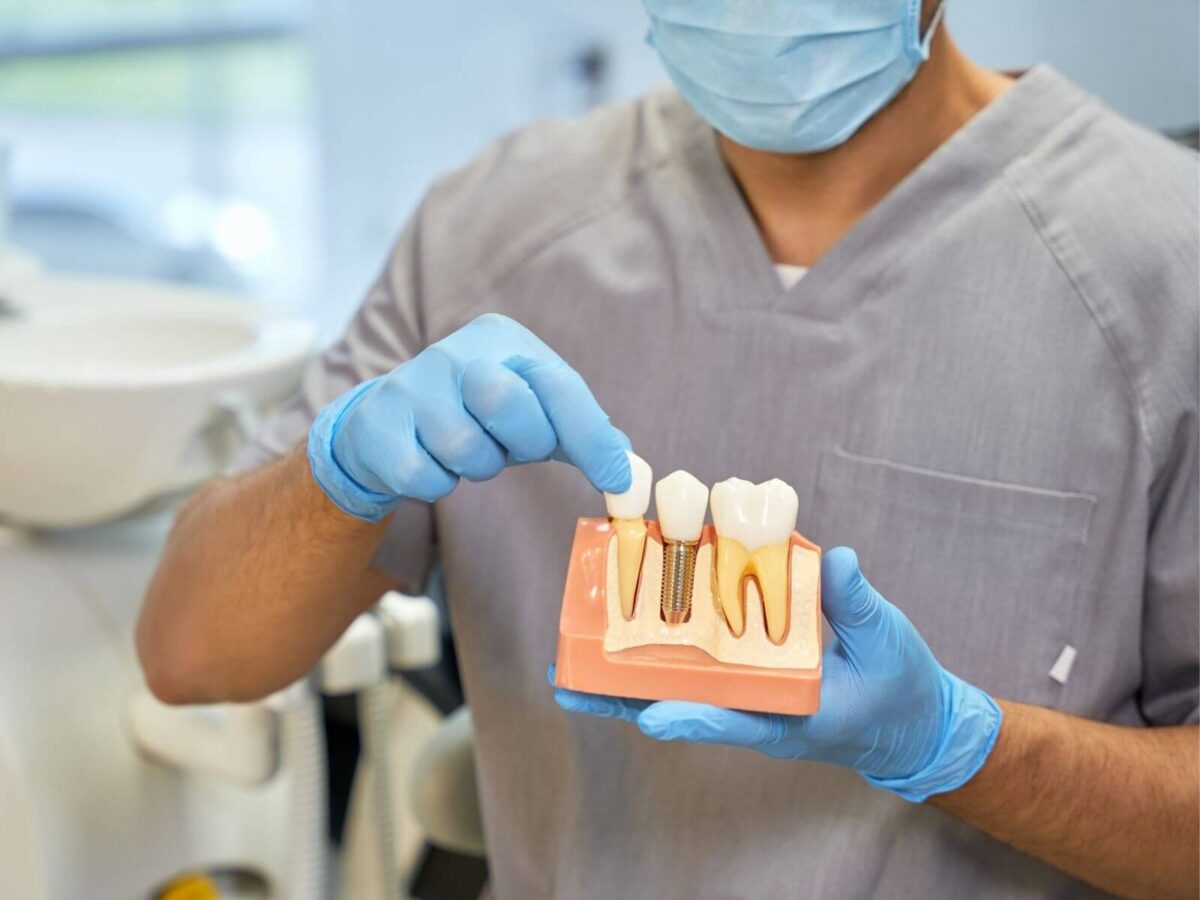Blog
Dental hygiene tips for healthy teeth & gums

Is Bone Grafting Necessary For Dental Implants?
Has your dentist informed you that you need a bone graft to qualify for a dental implant procedure? If you’ve in no way had implants, left cavities untreated, or worn dentures for decades, the probability of wanting a bone graft for an implant is quite excessive.
During the initial session with an implant specialist, a medical exam of your mouth is conducted. This is frequently accompanied by a CT scan to evaluate whether sufficient bone density and quantity assist the implant.
If the dentist recommends a bone grafting process based totally on the CT scan outcomes, you can be assured that a thorough assessment backs this advice.
What is Bone Grafting?
Bone grafting is a surgical operation that includes changing the bone to feature greater tissue in human infrastructure. Transplantation from every other part of your frame or a donor is surgically inserted into the site. Your jaw will fill in with the graft intended to improve the density of a compromised bone.
A bone graft can be needed to ensure that the jawbone will manage to pay for the assistance for numerous years. According to the research, it’s feasible to lose as much as 25 percent of the jaw bone density in the first year after you lose your teeth, and consequently, bone grafting may be required before the prosthetics can be fitted.
While the methods are almost always fit, extra remedy isn’t always required. Your dentist will recognize that you’ll require this after she or he has conducted a CT test of your mouth.
When is Bone Grafting Recommended?
A dental bone graft is inevitable when someone has too much bone in their jaws. Since bone supports dental implants, the absence of it would put a person at a one-factor risk of implant failure. When placing dental implants, sufficient bone must be around the places where the implants are to be fixed.
A bone graft would be advisable for someone who once suffered from periodontal disease, has had several lost teeth, or has worn dentures for a long time. Human bone slowly dissolves when there are no teeth, so the longer you live with tooth loss, the higher your chances are of requiring a bone graft for dental implants.
Types of Bone Grafting
There are 2 types of bone grafting:
- Minor bone grafting: This process includes using bones from an exceptional phase of your jaw. A neighborhood anesthetic is administered to numb the place and prevent aches, although you stay awake during the remedy. Once the technique is completed, patients can commonly return home on the same day.
- Major Bone Grafting: Major bone grafting is used if you require extra bone. It entails using a bone graft from any other part of your body, likely the hip vicinity. You are given an anesthetic as well. This medication places you to sleep so that you can’t sense any ache in the course of the system. You need to remain in the hospital for some days after the operation.
Preparing for a bone graft
Be certain to inform us whether you have any ailments and whether you take a few medications. If you smoke, we advocate you stop and avoid resuming this habit in the future. This minimizes the opportunity of getting dental implants. Such negative blood circulation results from smoking because it hinders the waft of oxygen to the tissues of your body, slowing down the recovery technique of wounds.
Why A Dental Bone Graft is Essential?
The following are some principal reasons you could require a dental bone graft.
Implants for Missing Teeth
Patients likely undergoing implant surgical treatment to replace missing teeth are the most likely candidates for dental bone grafts. Dental implants are synthetic roots with a screw-like appearance hooked up in the jawbone. The top of the implant is completed with a crown that resembles the color and texture of the adjacent teeth.
In many cases, a bone graft is wanted to create a stable foundation for the implant. To this end, a survey of 797 patients who acquired implants found that 56% of the implant sites wanted bone grafts first.
Tooth loss or gum disease
Dental bone grafting may be vital even if you’re not planning to get an implant. It is frequently finished to rebuild a portion of the jaw that has lost bone due to factors like enamel loss or periodontal disease that could begin affecting adjacent enamel and gums.
Bone grafting allows stabilizing the jaw, preventing further bone loss and reducing the threat of long-term headaches. Uncontrolled gum disorder can result in additional tooth loss and, in extreme instances, contribute to lifestyles-threatening situations along with heart sickness.
Bone Loss
Other candidates for dental bone grafts are the patients whose appearance has been compromised due to bone loss. In some cases, dentists recommend bone grafting if a patient is losing his or her bone mass in the jaw, making the face look comparatively shorter than before.
Osteoporosis is a possibility for older people; the same is true for bone loss in the jaw.
However, anyone of any age who has broken their jaw or who has had issues with oral hygiene or other health issues, including major infections, may need a dental bone graft.
How Painful is Bone Graft?
An autogenous dental bone graft, which does not use the patient’s bone material, is a minor surgical operation.
You don’t even feel the pain while the procedure is being done because you are given an anesthetic drug. After that, it is often managed by ordinary analgesics and other mild aches in the subsequent days.
Nonprescription pain relievers or prescribed medications may be recommended to manage discomfort. Significant pain during the procedure and several weeks of aching during recovery are typically experienced only if extensive work is performed.
However, if the bone material is taken from your body, the healing is more painful as the surgery occurs in two areas: the hip and the jaw.
What is usually taken from and replaced through grafted bone is quite little, so the period of one’s soreness should be minimal.
Conclusion
Preliminary dental care after tooth loss increases the chances that you will not need bone grafting to use a dental implant to fill the gap. Patients can even come when they lose a tooth but still need a bone graft. Some of the variation can be explained by the fact that people shed their teeth for some reason. Visit Port Lavaca Dentist to have your bone graft done.


